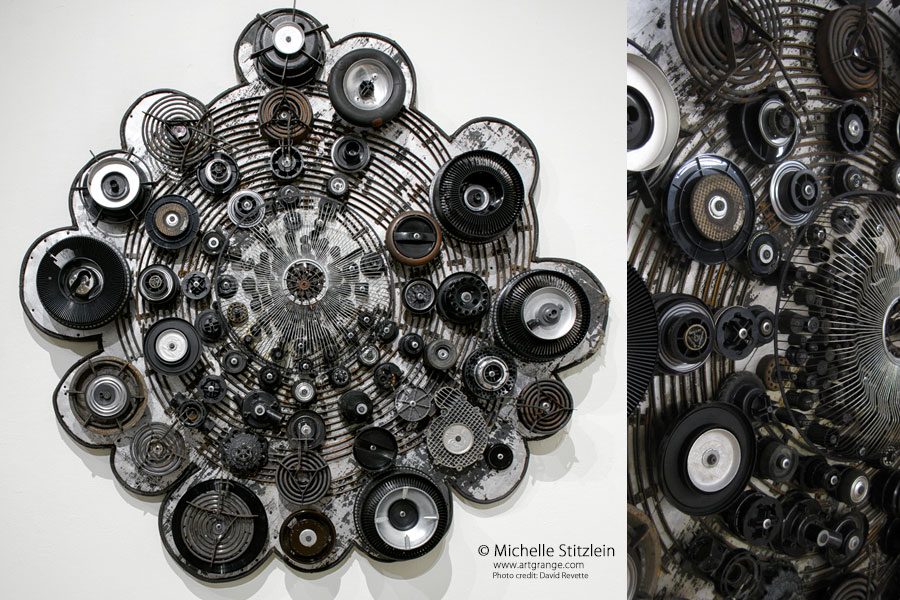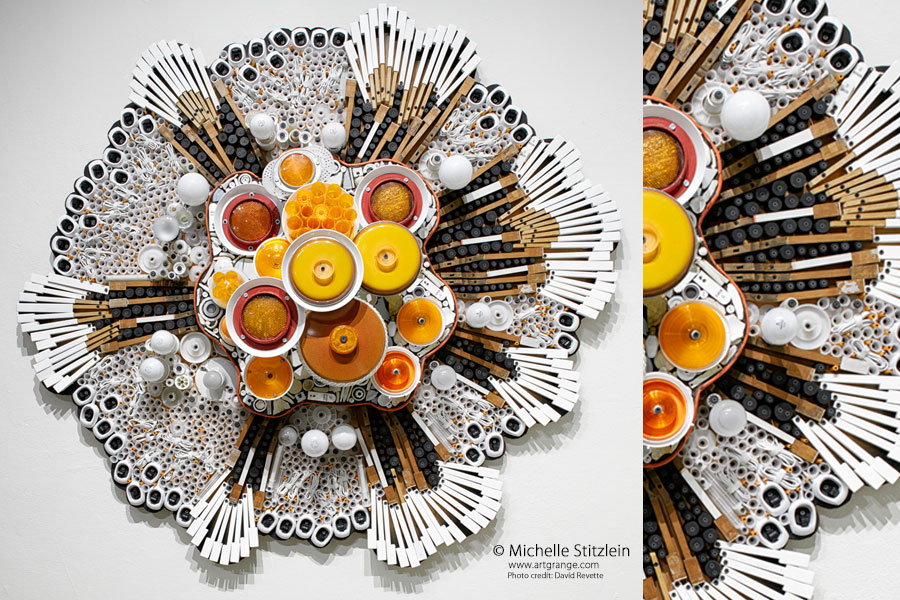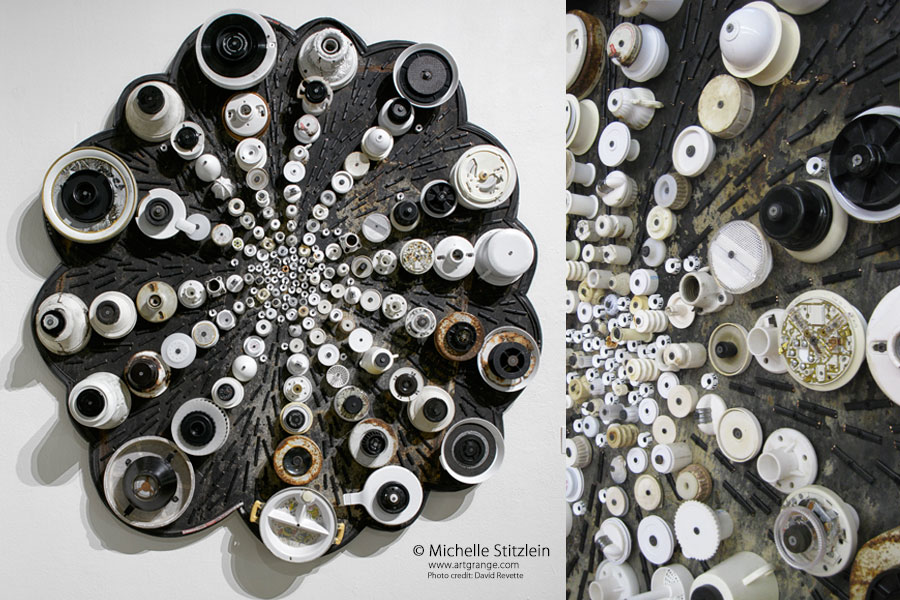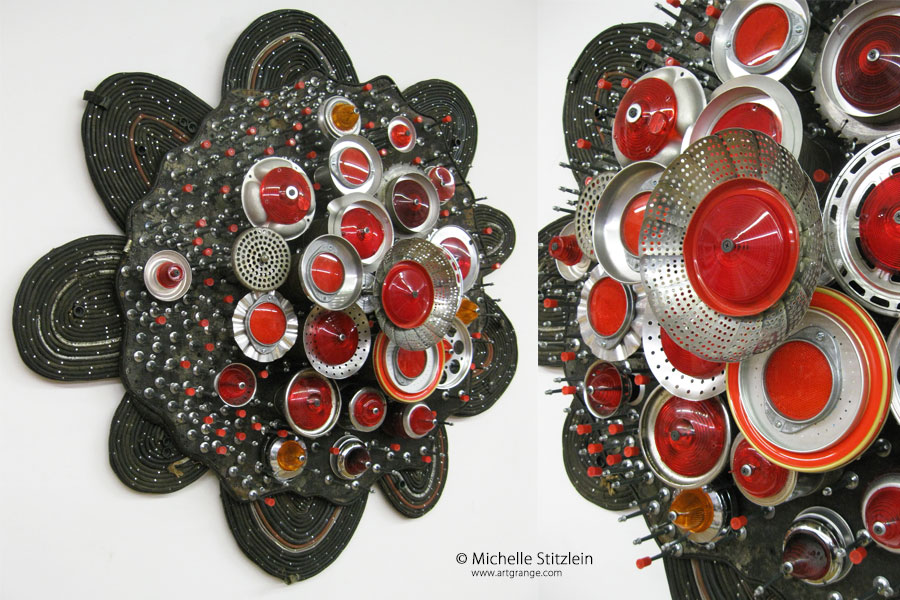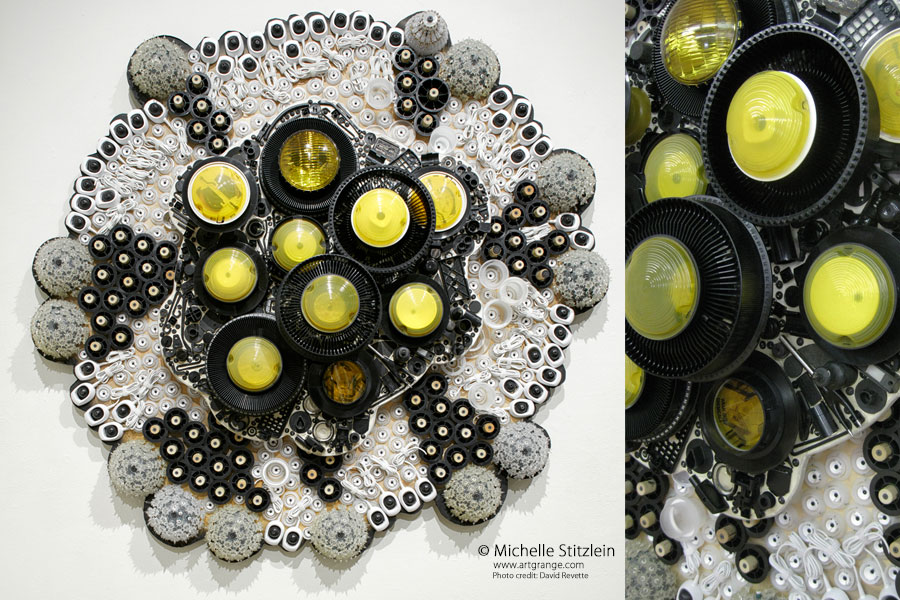Lichen series
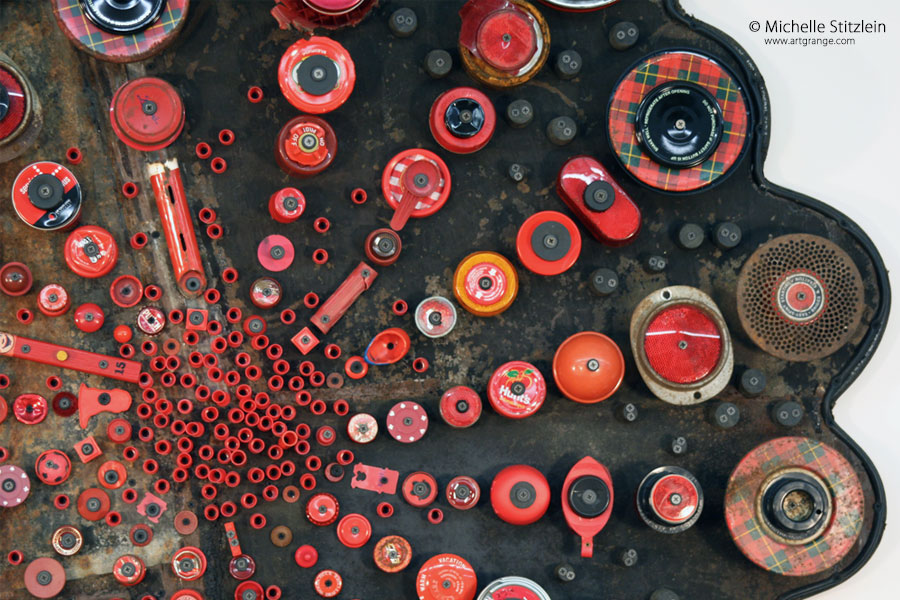
Ms. Stitzlein works almost exclusively with found-objects, and in very large scale, this collection being no exception. “I learned a lot about myself and how I work from this project,” she said, “Small is not what I do!” After a successful run of exhibiting a series of large-scale, moth assemblages, she decided that, despite pleas for her to do more of them, her interests were leading her elsewhere. “I like botanical subjects, but I don’t like to go the way of floral. Lichen is unusual; there aren’t too many in my backyard! And it’s something that can just grow across a surface like moss. I really liked the idea of making some lichen that could grow across the walls of a gallery, organically.”
A town dump in Baltimore, Ohio, closed since the 1950s, is the source of most of Ms. Stitzlein’s materials. In the past, people drew a metaphoric connection between Ms. Stitzlein’s use of recycled media and the lifespan of the moth. When asked if her materials held meaning in the context of lichen, she explained that artistically, she’s moving away from the rote and literal, and towards the abstract: “Typically, man-made items are created from natural resources. But in my case it’s a reversal. I’m creating natural things from man-made material. So no, there isn’t a similarity in the same context of the moth, but I find that the ‘reversal’ is much more interesting in and of itself than the concept of the moth’s transformation.”
She uses her aesthetic instinct to choose her materials, whether they be piano keys, a sardine can or a tail light. “Ninety-five percent of the time, I choose my materials based on their visual components [like] color, shape, and texture. Almost never do I choose them by what they might symbolize, although I might find a funny ‘play’ between something I’ve chosen and the work that it’s in.” For instance, the piece on the back wall of the Ohio Art League’s gallery, Cilia, was given that name because the ‘hairs’ on this piece were created with actual hair curlers. Her lichen bear Latin taxonomy, but she doesn’t claim to be creating actual species of lichen. Having done extensive research in books and online, she has settled on creating her own amalgam of species, just as for her moths. “Each one is a blend of a hundred different types, plus my imagination. They are more interpretive than they are scientific,” she said.
Each one of Ms. Stitzlein’s lichen leads you to first consider their amorphous perimeters, and then zero-in for a closer analysis of their components. Some might find the experience rather meditative, to which comparisons to mandala have been drawn. “I hear that my lichen remind people [of mandala] a lot, and it actually disappoints me! Mandala are very rigid and inorganic. I like asymmetry. But if someone wants to use it to meditate with, I’d be thrilled if they liked it that much! Everyone takes away something different.”
Michelle Stitzlein, USA

PROFILE
Michelle’s art work is created with recycled materials and found objects. Items such as old garden hoses, electrical wire, computer cables, piano keys, mini blinds, china shards, license plates, and bottle caps are utilized to create imagery and abstractions born in her imagination. However, only purposeful study will reveal the individual identities of the hundreds of objects within each of her pieces. These objects, once assigned and confined to a certain function or task, find a new decorative incarnation within her work as color, texture and/or pattern. Through the process of cutting, dismantling and placement, she coaxes the multiple, disparate objects into unusual relationships and odd bedfellows to unite as a bold, visual whole.

